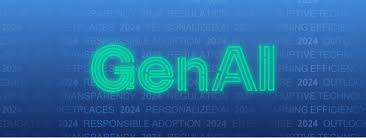Navigating the Cybersecurity Landscape: The Role of GenAI and the Human Element

In the ever-evolving world of cybersecurity, the advent of generative artificial intelligence (GenAI) has sparked both excitement and apprehension. The potential of GenAI to revolutionize cybersecurity practices is immense, but so are the risks associated with its implementation. This dichotomy has left many organizations grappling with a critical question: should they embrace GenAI or not?
The significance of this issue cannot be overstated. As cyber threats become increasingly sophisticated, the need for effective countermeasures is paramount. GenAI, with its advanced data processing capabilities, offers a promising solution. However, its implementation is not without challenges, and the human element remains crucial in the cybersecurity equation.
The Challenges and Potential of GenAI in Cybersecurity
One of the primary concerns with using GenAI in cybersecurity is the risk of ‘hallucinations’ – instances where the AI generates outputs that may not be factual or relevant. This raises questions about the reliability of GenAI and its potential to mislead cybersecurity professionals.
One proposed solution to this issue is the use of Retrieval-augmented Generation (RAG). By adding context to the AI’s outputs, RAG can reduce the likelihood of errors. However, this is not a foolproof solution. The human element remains crucial, as professionals must still ask the right questions to ensure the accuracy of the AI’s outputs.
GenAI as an Assistant, Not a Replacement
While GenAI can help address the IT skills gap and personnel shortages in cybersecurity, it is not a stand-in for a security operations center. Rather, it should be viewed as an assistant and an accelerant. A fully functioning threat detection, investigation, and response process must already exist for GenAI to supplement it effectively.
The demand for cybersecurity professionals is growing at a pace that the supply simply cannot keep up with. This shortage is exacerbated by more complex workloads, smaller teams, and lower budgets, coupled with an increasingly dangerous threat landscape and complicated regulatory and compliance protocols.
The perception that a technical background is necessary to enter the cybersecurity field further compounds the issue. This discourages individuals from diverse and non-traditional backgrounds, who could potentially make excellent security analysts, from pursuing careers in this field.
Bridging the Gap with GenAI
GenAI offers a potential solution to the labor shortage in cybersecurity. By equipping IT teams with technical knowledge and capabilities, GenAI can enable a wider range of professionals to take on cybersecurity roles.
With GenAI, organizations no longer need specific domain knowledge to perform certain business-critical tasks. This is made possible by combining GenAI’s data processing capabilities with proprietary data served up by a powerful search engine through RAG.
The integration of GenAI into cybersecurity practices could significantly alter the landscape of the field. If properly implemented and used responsibly, GenAI has the potential to counter the attack advantage of malicious actors.
However, the future of cybersecurity is not solely dependent on GenAI. The human element remains crucial, and the need for skilled cybersecurity professionals will continue to grow.
Recommendations
For organizations considering the implementation of GenAI, it is essential to have a fully functioning threat detection, investigation, and response process in place. GenAI should be viewed as an assistant and an accelerant, not a replacement for human professionals.
Moreover, organizations should strive to diversify their cybersecurity teams. Encouraging individuals from diverse and non-traditional backgrounds to enter the field can help address the labor shortage and bring fresh perspectives to cybersecurity practices.
The advent of GenAI presents both opportunities and challenges in the field of cybersecurity. While it offers a potential solution to the labor shortage and can enhance cybersecurity practices, its implementation is not without risks. The human element remains crucial, and the need for skilled cybersecurity professionals will continue to grow.
As we navigate the evolving cybersecurity landscape, the question is not whether to use GenAI, but how to use it effectively and responsibly.
Call to Action
Stay informed about the latest developments in cybersecurity and consider how GenAI could enhance your organization’s cybersecurity practices. Remember, the future of cybersecurity is not solely dependent on technology, but also on the skills and expertise of human professionals.
External Resources
1. The National Institute of Standards and Technology (NIST) Cybersecurity Framework
2. Understanding Generative AI and Its Impact on Cybersecurity
3. The Role of AI in Mitigating Cybersecurity Skills Shortage